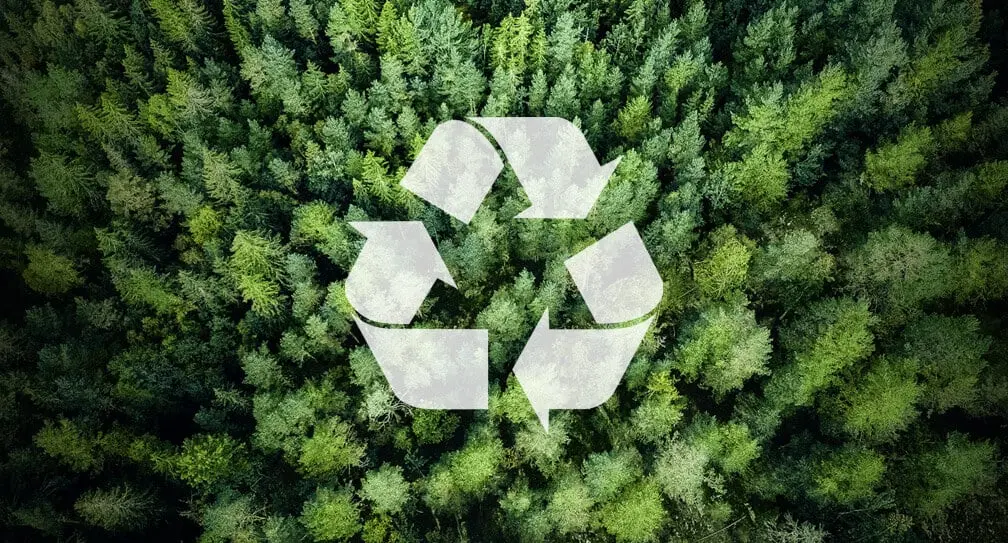Across the United States, Extended Producer Responsibility Laws are being passed, pushing companies to take their sustainability initiatives to the next level. Today there are 130 EPR laws in place across 33 states – and this number is rapidly rising.
Extended Producer Responsibility (EPR) laws shift responsibility for end-of-life products away from consumers, taxpayers, and municipalities and back onto the product producers. As a result, producers are having to reconsider their products from their initial production to their disposal.
From Minnesota to Main, more and more states are buying into sustainable change and pushing for EPR laws. If you’re a producer the pressing question is, how are you proactively rethinking your packaging strategies? In this blog, we’ll explore why action is needed now more than ever and best practices for driving this change.
What is Extended Producer Responsibility (EPR)?
In its simplest form, Extended Producer Responsibility (EPR), is a set of regulations designed to incentivize manufacturers to make more sustainable products and packaging decisions, keeping waste out of landfills.
These policies place the financial and operational responsibility for the environmental impacts of products onto packaging producers. (A.K.A. manufacturers) not just at the point of manufacturing, but for the entirety of the product life cycle.
The laws and regulations governing each region’s EPR policy approach are varied and growing, but they all share common characteristics, with an end goal of reducing packaging waste and helping manufacturers meet sustainability goals.
Who Is Responsible for Extended Producer Responsibility (EPR) Reporting?
As mentioned before, EPR places product lifecycle responsibility onto the producers themselves. This includes producers and manufacturers of products and packaging across all industries.
From brand owners and retailers (in some cases) to importers of goods and services, all of these individuals must take responsibility for EPR legislation across various states.
This means providing data on everything product and packaging-related – material type, volume, environmental impact, and everything in between. And all this data must be submitted by the various deadlines provided.
If you fall into the producer category now is the time to brush up on your packaging data and EPR legislation, before it’s too late.
Extended Producer Responsibility (EPR) Regulations by State
Maine EPR Regulations
2021: Maine becomes the first state in the US to implement an EPR law (LD 1541). This law holds producers financially responsible for managing packaging materials end-of-life.
2026: Companies are required to report on their packaging usage and comply with strict EPR regulations
2027: Maine begins collecting fees from producers based on their material use. They will use financial incentives to encourage the use of sustainable materials.
Oregon EPR Regulations
2021: Oregon passes its first EPR law, the Recycling Modernization Act (Senate Bill 582), although the bill didn’t go into effect until 2022.
2025: Oregon’s EPR law goes into effect, requiring producers to participate in EPR programs and join a PRO. Producers must submit proof of packaging data and pay any necessary fees.
Colorado EPR Regulations
2022: Colorado passes EPR program for the Statewide Recycling Act, House Bill 22 – 1355.
2024: Deadline for producers to register with a PRO.
2026: Producers have to provide reports for 2025 packaging data to prove that requirements are being met.
Minnesota EPR Regulations
2024: Minnesota becomes the fifth state to pass EPR legislation.
2026: Producers must register with a PRO and advisory board
2029: producers must cover 50% of net recycling costs.
2032: producers can only produce products and packaging that are recyclable, refillable, reusable, or meet other requirements.
California EPR Regulations
2024: California passes its first EPR regulations: Plastic Pollution Prevention and Packaging Producer Responsibility Act (SB-54). Producers of covered materials must join a PRO.
2032: All packaging in California must be recyclable or compostable, plastic packaging production has to be reduced by 25%, and 65% of packaging must be recycled end of life.
Washington EPR Regulations
2021: Governor Jay Inslee signed Washington State Senate Bill 5022-S2.E into law.
2022: Producers of beverages sold in plastic containers, plastic trash bags, and household cleaning and personal care products in plastic containers are required to register with the Washington State Department of Ecology.
2023: Enforcement of the minimum 15% PCR by weight content for plastic beverage containers. Dairy Milk and Wine in 187 ml Bottles, household cleaning and personal care product containers, and plastic trash bags are also affected by the legislation at later dates.
EPR Compliance Challenges
There are significant consumer and regulatory pressures to adopt EPR, but that doesn’t mean it’s an easy win. Product and packaging producers face various unique challenges when it comes to EPR compliance, requiring each producer to take individualized approaches for coming up with resolutions.
Local Nature of EPR Mandates
The local nature of EPR mandates makes compliance a challenge. Each regulation is defined by local governments and has its own guidelines, incentives, and penalties. This requires organizations to continuously audit their supply chains and stay up to date with shifting regulations.
Consumer Involvement in End-of-Life Management
The spirit of EPR is to take the burden off consumers by reducing the environmental footprint of product production and use. However, the consumer is still part of this process. Elements of EPR programs must be easy for consumers to promote buy-in across stakeholders. For consumers to comply with end-of-life management take-back/reuse efforts must be simple to implement.
High Initial Costs for Producers
The transition to less wasteful processes generally comes at a significant cost to producers who have to change processes, reconfigure equipment, and explore new materials. This being said to avoid fines and legal consequences these upfront costs are worth the long-term effects.
What EPR Means for You
If you learn anything from this article it’s that Extended Producer Responsibility is here to stay – and is increasing rapidly. Programs vary considerably in complexity, with some schemes requiring products to be split into over 15 different categories and sub-categories while others just ask for four or five.
This being said every law will require producers to take full responsibility for their products while carefully looking at product design and packaging waste to reduce environmental impact. It is also likely that fees will begin to increase in many states to ensure that producers are bearing a substantial proportion of waste management costs.
With time it is likely that reporting requirements will increase in complexity, allowing for a greater differentiation of fees across states and countries. Companies need to act proactively not reactively to stay ahead of this legislation before it’s too late.
How to Prepare for Extended Producer Responsibility Legislation in the US
Preparing for Extended Producer Responsibility (EPR) legislation in the US can feel daunting, but with a strategic approach, businesses can navigate the complexities smoothly. The following are the most crucial steps for seamlessly preparing and implementing EPR regulations.
1. Stay On Top of Shifting Regulations
First, it’s essential to stay on top of the regulatory process—actively monitor updates, and don’t hesitate to seek clarification on any ambiguous points. No matter your experience with EPR the reality is that these regulations are complex and take time and patience to understand. By allocating time and resources to learning about the most recent EPR landscape organizations can ensure they stay ahead.
2. Integrate A Data Management System
A crucial step in this preparation is data management which involves gathering, digitizing, and centralizing all critical data to streamline reporting processes. With Specright’s Specification Data Management Platform companies can manage and maintain data accuracy enabling organizations to confidently gear up for EPR legislation, ensuring compliance and fostering a sustainable business practice.
3. Audit Your Supply Chain Packaging Materials
Once data is organized and accessible, companies must check the current state of their products and packaging. By running audits companies can determine where changes are needed to make sure EPR regulations can be met.
4. Collaborate Across Stakeholders
In order to make sure your company continues to meet its EPR marks all stakeholders must be involved. From internal teams to suppliers, everyone must be aligned on EPR goals to ensure that they are met at every stage of the supply chain. Consulting with experts like Lorax EPI can be incredibly beneficial as their specialized knowledge can help demystify the intricacies of EPR compliance
5. Strive For Continuous Improvement
The reality is that meeting EPR regulations is far from linear. With regulations constantly changing and product SKUs shifting companies must strive for continuous improvement across their supply chain. Sustainability is no longer just a buzzword, it is a global movement. By complying with EPR regulations you can be a part of this positive change.
Specification Management: The Foundation of a Strong EPR Strategy
At the heart of every EPR strategy must be an engine that provides transparent visibility, simplifies regulatory reporting, and helps your packaging and product teams make informed material management decisions.
Specifications are the structure by which those foundations can be built – they are the technical instructions needed to make a product – including everything from raw materials, ingredients, formulas, packaging, labels, and even machinery.
When it comes to EPR compliance, producers are going to need access to their data and specifications but the reality is that most companies still struggle to find an effective solution for managing specs.
To meet regulatory requirements and laws across states businesses must use data to prove their compliance. With tools like Specright, organizations can get their packaging specification data underway, making the shift toward EPR a breeze.
Here’s how Specright can help:
1. Access Your Product Lifecycle’s Waste Impact
Digitize and assign up-to-date DNA-level specification data to products, materials, suppliers, vendors, and finished goods. Propagate changes with many-to-many relationship capabilities.
2. Analyze And Identify Areas Of Waste Management Optimization
Raw material usage, recycling rates, and other relevant data can be benchmarked with dashboards & reports to identify bottlenecks, trends, and sustainable progress of products and their packaging over time.
3. Utilize Insights To Drive Transformation
Take action with your insights. Change out-of-compliance packaging materials with your products. Identify sources of waste, and perform material optimizations to save packaging costs.
With buy-in from all stakeholders, coupled with the right tools companies can transform the way they make amazing sustainable things. To learn more about EPR check out this infographic or request a demo with our team.
Explore More Blogs
Get Started
With Specright’s Solution Suite, you can digitize, centralize, and link your specification data to drive efficiencies, intelligence, traceability, and collaboration within your organization and across your supply chain network.




